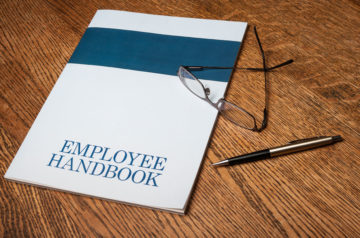
U.S. DOL Announces Rule Change Narrowing FLSA Joint Employer Test
On January 12, 2020, the United States Department of Labor (DOL) issued a final rule in which it adopted a four-factor balancing test to determine the joint employer status of an employee under the Fair Labor Standards Act (FLSA), the federal minimum wage and overtime law. The regulation reverses the DOL’s previous interpretation that had expansively defined joint employment and had allowed loosely affiliated business and franchisors to be held jointly liable for violations of federal wage and hour laws. See DOL Wage and Hour Division, Administrator Interpretation No. 2016-01.
The final rule will be published in the Federal Register on January 16, 2020, and goes into effect on March 16, 2020. The rule is codified as a regulation at 29 C.F.R. § 791.2
The DOL’s final rule sets forth a four-factor balancing test for determining joint employer status under the FLSA. Joint employer addresses the situation where an individual may be deemed an employee of more than one company for the purposes of the FLSA. In determining whether a second company is a joint employer of an individual, the DOL’s final rule explains that it will examine whether the second company (potential employer) engages in the following activities:
- Hires or fires the employee;
- Supervises and controls the employee’s work schedule or conditions of employment to a substantial degree;
- Determines the employee’s rate and method of payment; and
- Maintains the employee’s employment records.
No single factor is dispositive under the new test, and the standard for determining whether joint employment exists remains dependent on the particular facts of each case. The final rule further clarifies that to be a joint employer under the FLSA, a second employer must actually exercise—directly or indirectly—one or more of the four control factors.
The final rule also contains additional guidance on how to apply the test. The final rule includes a number of examples illustrating the application of the four-factor test to these and other business-to-business fact patterns. The final rule identifies several factors that will not be considered when determining whether a person or entity is a joint employer under the FLSA, including:
- The employee’s economic dependence on a potential joint employer;
- Operation as a franchisor or entering into a brand and supply agreement, or using a similar business model;
- The potential joint employer’s contractual agreements with the employer requiring the employer to comply with legal obligations or to meet certain standards to protect the health or safety of its employees or the public;
- The potential joint employer’s contractual agreements with the employer requiring quality control standards to ensure the consistent quality of the work product, brand or business reputation; and
- The potential joint employer’s practice providing the employer with a sample employee handbook, or other forms, allowing the employer to operate a business on its premises, offering an association health plan or association retirement plan to the employer or participating in such a plan with the employer, jointly participating in an apprenticeship program with the employer, or any similar business practice.
Over the years, federal courts have applied various tests to determine joint employer status, which has resulted in confusion among employers. According to the DOL, the final rule promotes greater consistency and provides much-needed clarity to employers by specifying what kinds of business relationships make employers jointly responsible for compliance with minimum wage, overtime and other labor standards under the FLSA. Employers should be aware that other statutes and state laws provide different tests for joint employment.
By: Shane R. Goodrich, Morgan, Brown & Joy, LLP



